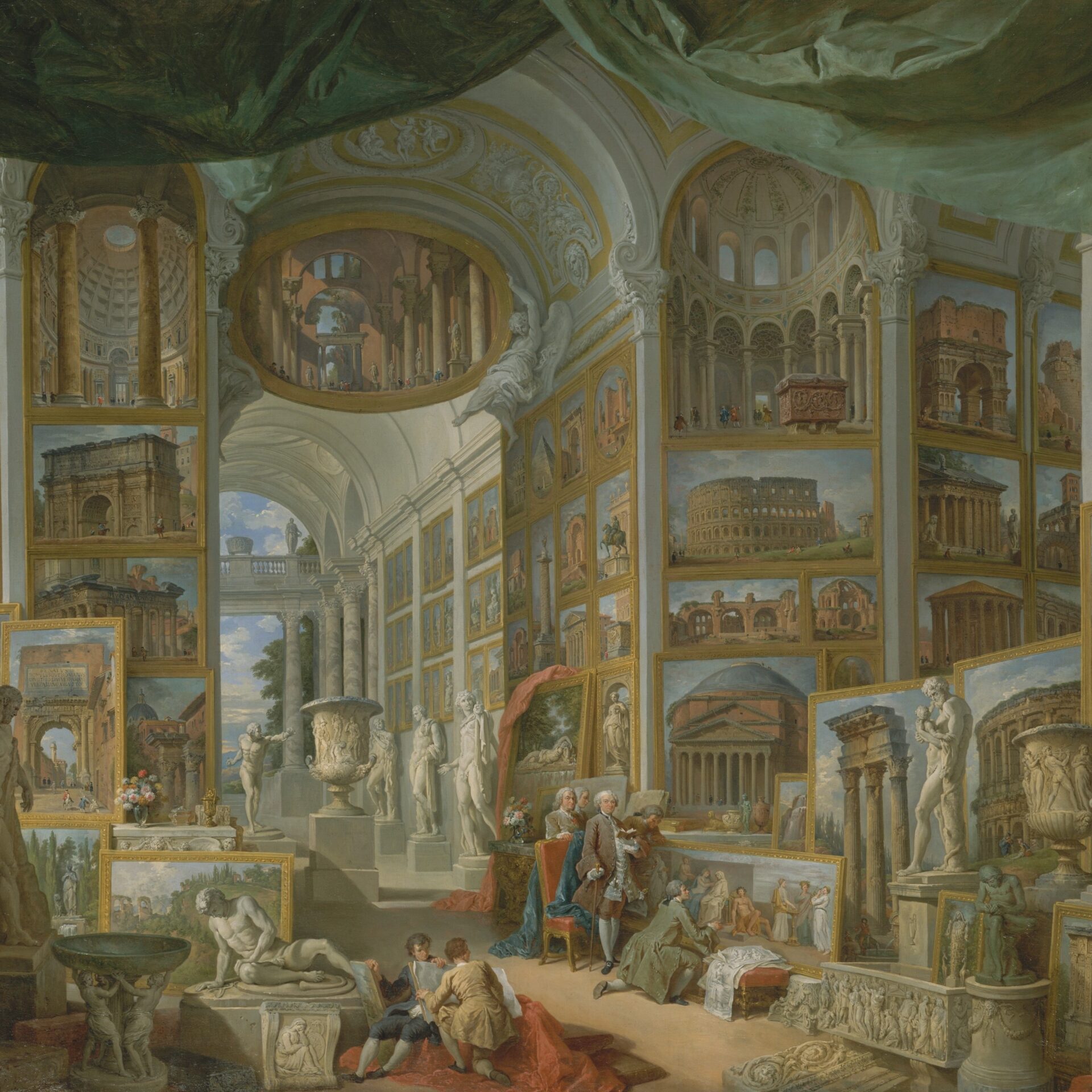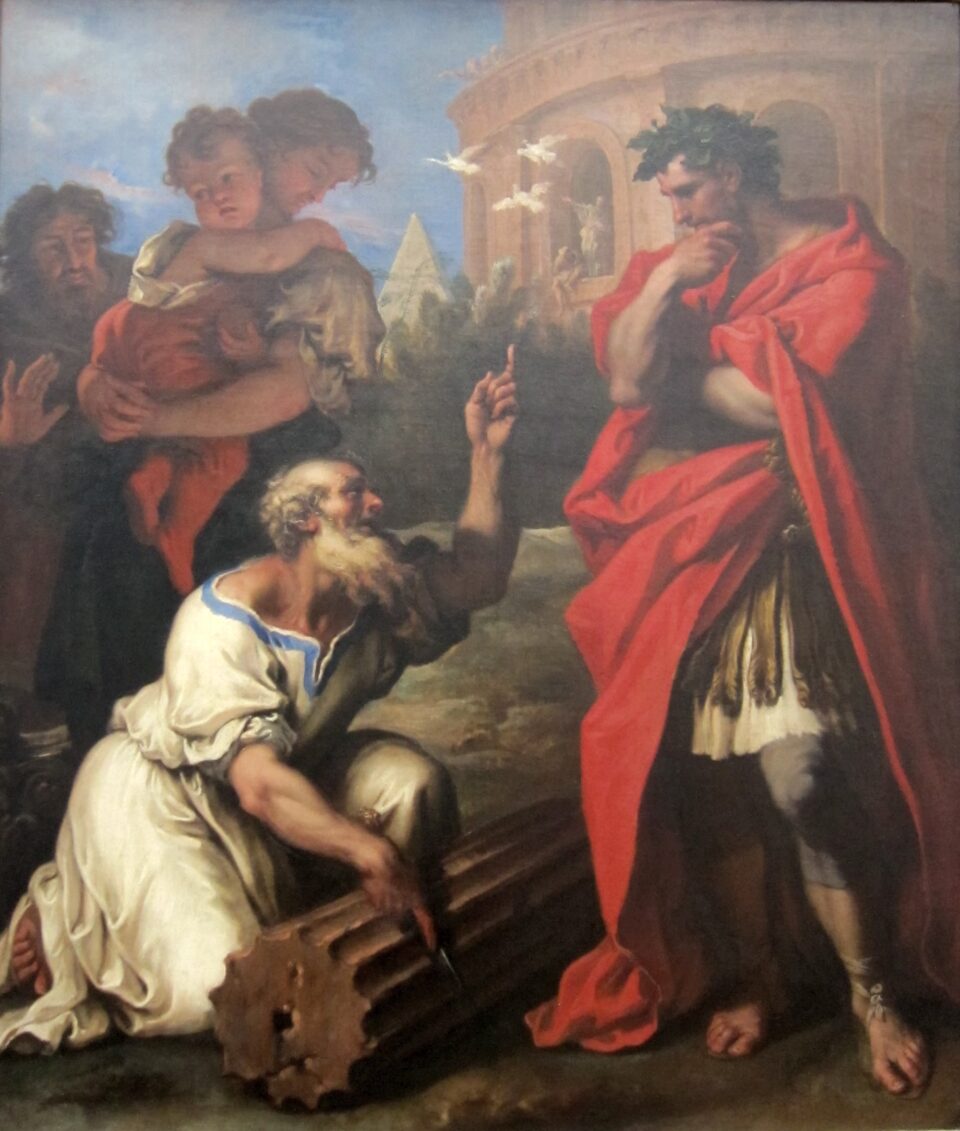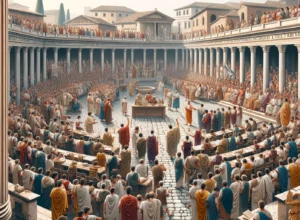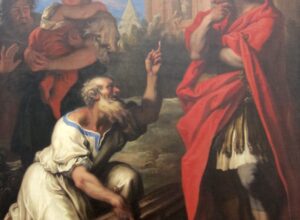According to tradition, the story of Rome begins with the twin brothers Romulus and Remus, born of divine lineage and destined for greatness. Raised by a she-wolf in the wild, their story is not just a tale of survival, but the start of what would become one of the greatest empires in history.
The Story of Romulus and Remus
Romulus and Remus are central figures in Rome’s foundation myth. They were the sons of Rhea Silvia and Mars, the god of war. Rhea Silvia was the daughter of Numitor, the king of Alba Longa, an ancient city near the site of Rome. Numitor’s brother, Amulius, seized the throne and forced Rhea Silvia to become a Vestal Virgin. Vestal Virgins were priestesses of Vesta, the goddess of the hearth, and were required to remain celibate to devote themselves entirely to religious duties. However, Rhea Silvia became pregnant by Mars, thereby inciting the wrath of Amulius, who feared the birth of potential rivals.
Amulius ordered the newborns to be cast into the Tiber River to ensure they would not survive to challenge his rule. The servant tasked with executing the order placed the twins in a trough, but rather than being drowned, the trough floated downstream and came to rest near the Ficus Ruminalis, a sacred fig tree. Here, they were discovered by a she-wolf (lupa in Latin) and a woodpecker, both animals sacred to Mars, who nurtured the twins. The she-wolf suckled them, and the woodpecker brought them food, which kept them alive and well.
Interesting Fact
The iconic imagery of the she-wolf nursing Romulus and Remus became a potent symbol in Roman iconography, representing Rome’s connection to wild nature, maternal protection, and divine favor.
The twins were eventually found by Faustulus, a local herdsman, who, upon discovering them under such miraculous circumstances, took them to his home. Faustulus and his wife, Acca Larentia, raised the twins as their own. As young men, Romulus and Remus became leaders among their peers, known for their courage and martial skill. They eventually became involved in a conflict that led to the discovery of their true origins. They gathered a band of followers and attacked Alba Longa, killing Amulius and reinstating Numitor to the throne.
Following their victory at Alba Longa, Romulus and Remus decided to establish a new city. They returned to the area of the seven hills, near the Tiber River. Romulus favored the Palatine Hill as the location for the new city, situated above the Lupercal cave where, according to legend, the she-wolf had nursed them. The Palatine Hill was central, easily defensible, and had already been a site of settlement in earlier times, making it a strategic choice. In contrast, Remus preferred the Aventine Hill, which was also strategically sound and featured open spaces suitable for habitation.
Unable to resolve their dispute through discussion, the twins resorted to augury, an ancient practice where they interpreted the will of the gods by observing the flight of birds. This method was commonly used in ancient Rome to make critical decisions where human judgment seemed insufficient. Each twin set up on his chosen hill at dawn and prepared to count auspicious signs in the form of birds. Remus, on the Aventine Hill, saw six birds, while Romulus, from his position on the Palatine Hill, observed twelve.
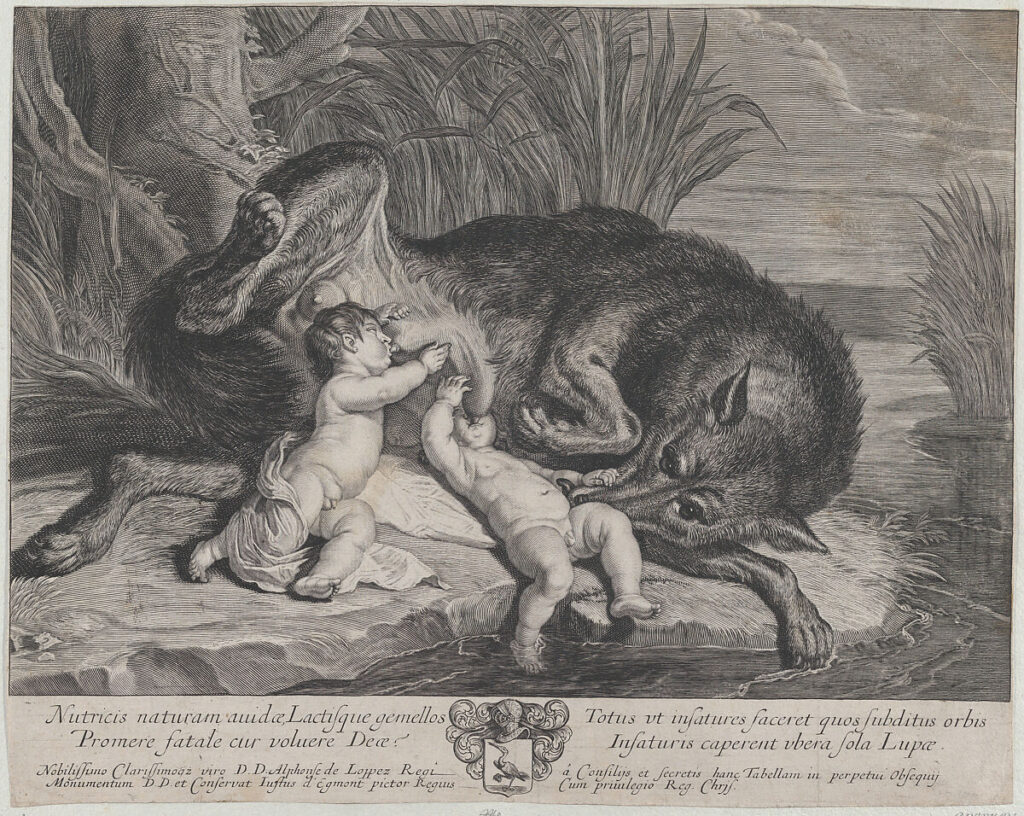
The results of the augury led to another dispute. Romulus argued that his seeing more birds meant the gods favored him as the founder and leader. Remus contested either the interpretation or the conduct of the augury, feeling either cheated or simply not convinced by the divine sign. The conflict escalated, and when Remus ridiculed Romulus by leaping over the partially constructed walls of Romulus’ new city, Romulus or one of his supporters killed him.
With Remus dead, Romulus became the uncontested founder of the new city. He named the city Rome after himself and embarked on establishing its institutions, government, military, and religious traditions. Romulus’ reign as the first king of Rome saw the laying down of many foundational laws and practices that would define Roman culture and governance for centuries.
Recent Archeological Insights
While the mythological narrative provides a captivating origin story, archaeological evidence offers a more nuanced understanding of Rome’s early settlements and urban development. Excavations across the Palatine Hill and surrounding areas have revealed layers of occupation dating back to the eighth century BCE, corresponding to the traditional founding date of Rome in 753 BCE. During this time, small settlements began to emerge along the banks of the Tiber River. These early communities, inhabited by Latin-speaking tribes, engaged in agriculture, pastoralism, and trade, laying the foundations of a burgeoning society.
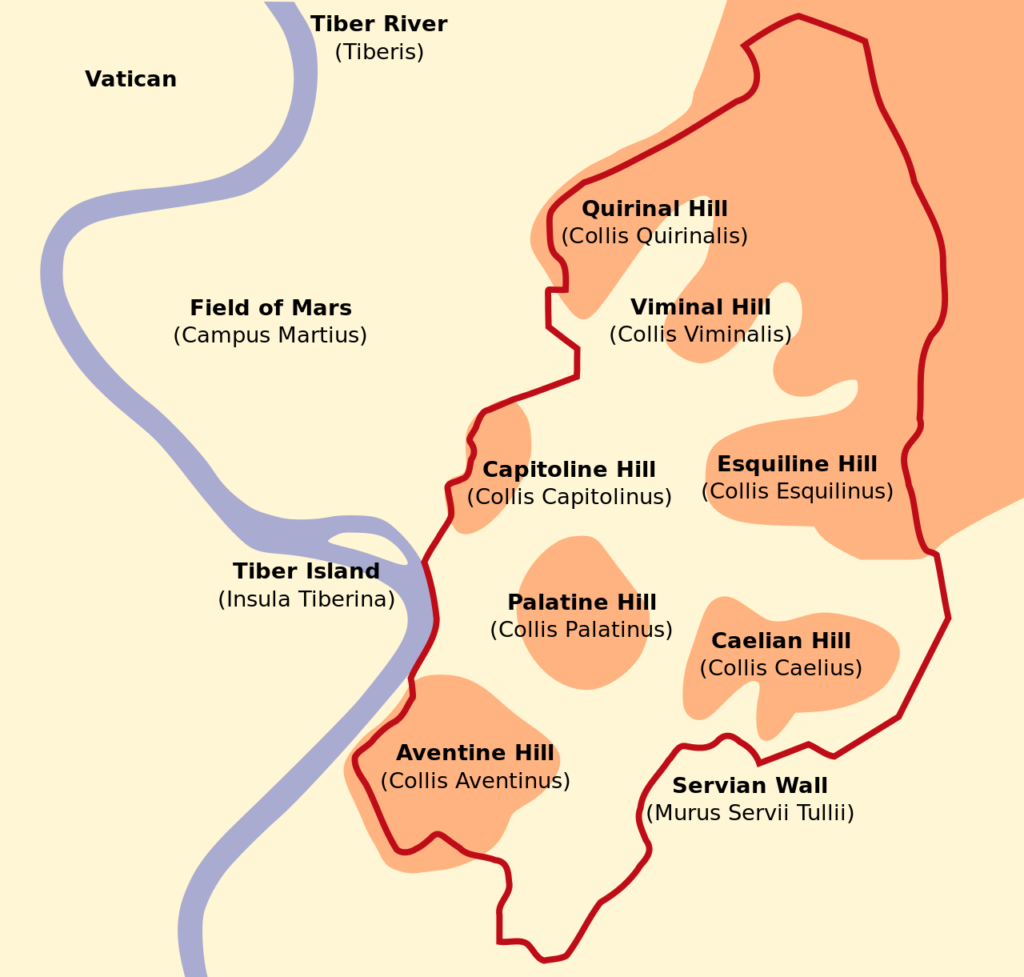
The Palatine Hill, traditionally associated with the earliest Roman settlements, showcases remnants of huts, pottery fragments, and defensive walls, indicating a gradual process of urbanization and communal living. The discovery of the “Hut of Romulus,” a circular hut structure atop the Palatine, has been linked to the legendary founder, although interpretations vary among scholars regarding its significance. While some scholars argue for a direct association with Romulus, others approach this discovery with caution, viewing it as a representative example of early Roman architecture rather than a specific attribution to Romulus himself.
Early Roman Society: From Village to City-State
The transition from a cluster of villages to a unified city-state marked a crucial phase in Rome’s early history. The emergence of the Roman monarchy (from the moment of its founding in 753 BCE to circa 509 BCE), traditionally attributed to seven legendary kings, including Romulus, Numa Pompilius, and Tarquin the Proud, reflects a period of political consolidation, legal development, and societal organization.
Under the monarchy, Rome expanded its territorial control, established religious institutions (such as the Vestal Virgins and the College of Pontiffs), and laid the groundwork for republican institutions that would follow. The influence of Etruscan culture on early Rome during the period of the Roman monarchy was significant and multifaceted. Etruscan architectural techniques such as arches and vaults influenced Roman building styles, evident in structures like the Cloaca Maxima (the ancient Roman sewer system). Etruscan religious practices, including divination and ceremonies, merged with Roman traditions, leading to the construction of temples dedicated to Etruscan deities like Minerva. Artistic exchanges enriched Roman visual culture with Etruscan motifs and craftsmanship, seen in pottery and bronze works. Etruscan political models influenced early Roman governance, shaping concepts of royal authority and administrative structures. This cultural fusion laid the groundwork for Rome’s later imperial ambitions and contributed to its enduring legacy as a center of power and innovation
Transition to Republic: Struggles for Power and Governance
The overthrow of the last Roman king, Tarquin the Proud, around 509 BCE marked the beginning of the Roman Republic, characterized by a system of checks and balances, senatorial authority, and elected magistrates. The establishment of republican institutions, including the Senate, popular assemblies (Comitia), and consuls, reflected a broader societal shift towards shared governance and representation.
Conclusion
The founding of Rome embodies a rich tapestry of myth, history, and cultural evolution, blending mythical heroes with historical realities to create a compelling narrative of resilience, ambition, and innovation. While the exact details of Rome’s early days may remain shrouded in mythological veils, archaeological excavations, ancient texts, and scholarly interpretations continue to illuminate the foundations of an eternal city.
Exploring Rome’s origins not only deepens our understanding of ancient civilizations but also sheds light on enduring themes of governance, societal evolution, and the interplay between myth and history in shaping collective identities. Rome’s journey from a humble village on the Tiber to the capital of a vast empire underscores the timeless allure and relevance of studying our shared human past.
